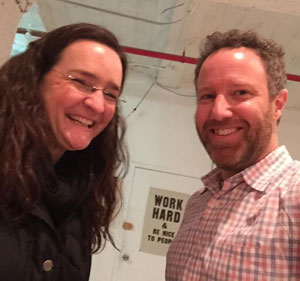Sarah Bray is a living embodiment of the 1,000 true fans ethos; She has a thriving career as a creative professional, by catering to a small group of like-minds who know and appreciate her work. Just before we spoke, Sarah was thrust into a career transition when she was laid off from her job. In this discussion, we explore her process of working through risk, and how she is driven by creating a meaningful body of work. Sarah is a strategic designer, front-end developer, and nation-builder, who recently worked for &yet
Click ‘play’ above to listen to the podcast, or subscribe on iTunes, or download the MP3.
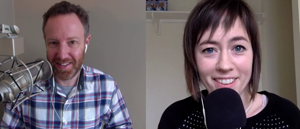 This podcast is part of the research for a book I am writing called Dabblers vs. Doers, which is about working through RISK as you develop your craft and build a meaningful body of work.
This podcast is part of the research for a book I am writing called Dabblers vs. Doers, which is about working through RISK as you develop your craft and build a meaningful body of work.
Here are some key insights that Sarah shared with me…
Making Long-Term Decisions Amidst Short-Term Challenges
Sarah was just laid off two weeks before we spoke. She framed her transition like this:
“I have 50 days before I actually have to be putting more money in the bank, so I gave myself three weeks to finish a book that I have been writing for the past two years. I figured, at least I’m working on something while I try to figure out what is next, so I’m not just sitting here worrying.”
As she stands on the edge of the abyss for her career, she took these steps:
- She revisited recent decisions about her creative work. She had decided to not work on her book this year, and the moment she got laid off, she immediately switched to focus intensely on the book.
- She put boundaries on this, giving herself three weeks to work on the book. She described it as “hiring herself” to do the work of writing the book. This had the effect of allowing creative juices some room to breathe, without fear of other work to encroach.
- She reframed this challenge as an opportunity. When she mentioned having only 50 days before she needed more income, I saw this as a terrifying challenge. She instead flipped it to become an opportunity, “I wanted to see how far I could push this time I have. For the first time in 9 years, I have time! 50 days isn’t much, but I have it. I saw that as a gift.”
- Working on a passion project with a friend, and online school she is developing with her friend Brooke Snow.
MAKING COLLABORATION SAFE
Sarah was incredibly open about an area where she feels she can still develop:
“I discovered my weakness is in collaboration, and ever since then I have felt hesitation in partnering with somebody, especially when money is involved, and ownership, and all these things that are hard.”
So when she and her friend Brooke wanted to explore collaborating, then first went through a book together: The Partnership Charter, to ensure that the collaboration would be a good one. I thought this was genius, and described it as their first act in the collaboration was to go to couples therapy together.
ON BEING PUBLIC
I have always marveled at how open Sarah is online in her newsletter, blog, and social media. Yet, like many people, there is a duality to that process:
“My relationship with online is so hard. I guess it brings out your insecurities, and the worst parts of yourself. Because you are putting things out there, and you get reaction from people. If you are the kind of person who looks at that social mirror as something that is accurate, then that can be hard. I’ve been struggling with that forever. It’s weird, because it feels like the thing I’m really good at is the thing that is toxic to me in some ways.”
YOU DON’T NEED A HUGE AUDIENCE TO EARN A LIVING AS A CREATIVE PROFESSIONAL
Years ago when I was in a mastermind group with her and two others, I always marveled at Sarah’s ability to release a product or service, and have it almost immediately sell out. She would regularly be booked six months in advance for consulting. She tells a bit of the behind the scenes of what that looks like:
“I don’t have a huge audience. The thing that I do is honor the relationships that I do have. So while I’m saying I can sell [300-500 books], it is based on 2,000 people. I have 5,000 Twitter followers, but that is not who I think of as the people who will buy it, it is usually the people on my email list, which isn’t a huge circle of people. What I have learned is that if you honest, it sounds trite, but if you can just find the thing that is true, and be able to say that, and be able to make something out of that, then you will be successful with whatever it is that you do. That is the way it has been for me.”
She said that this audience hasn’t just supported her making a living, but that it supported a team of three people awhile back. And even now as I talk to her, she is clearly not freaking out in terms of her next career move — she clearly knows that she has options, because she has a tight-knit audience of people who know her, like her, and value the services she provides. To me, Sarah is the living embodiment of 1,000 True Fans.
Thank you to Sarah for making the time to meet with me and share her wisdom. You can find her in the following places:
For more interviews and behind-the-scenes stuff on my book Dabblers vs. Doers, click here.
Thank you!
-Dan
Podcast: Play in new window | Download
Subscribe: RSS

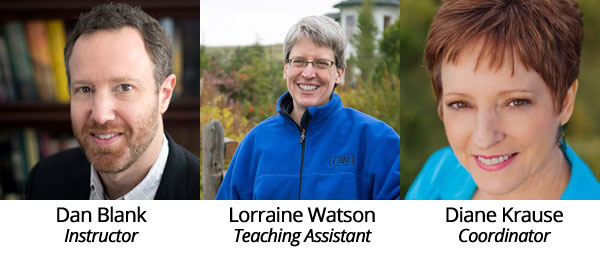
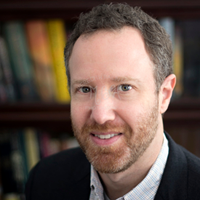 Well, there are my professional credentials:
Well, there are my professional credentials: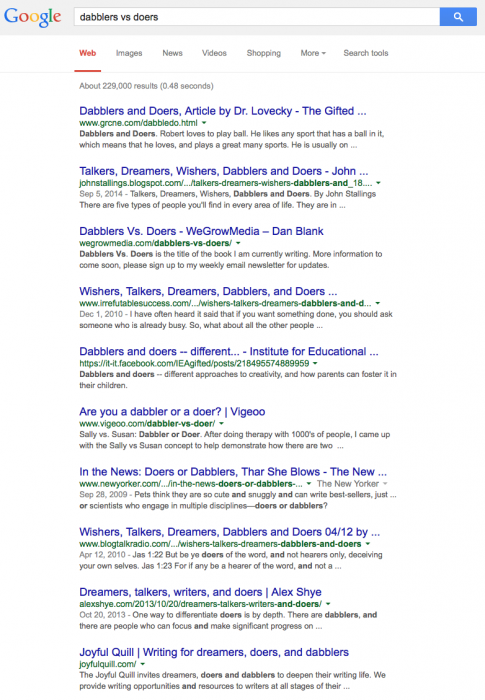
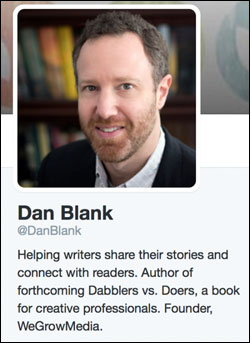
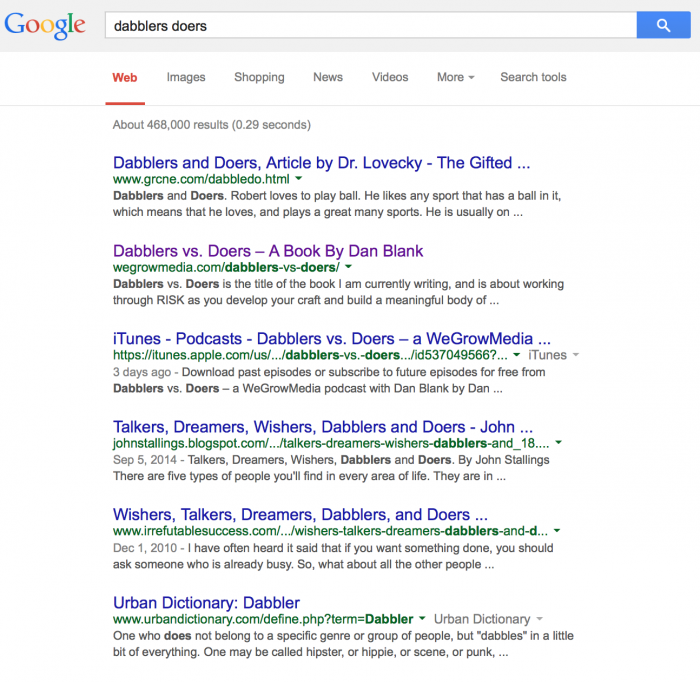
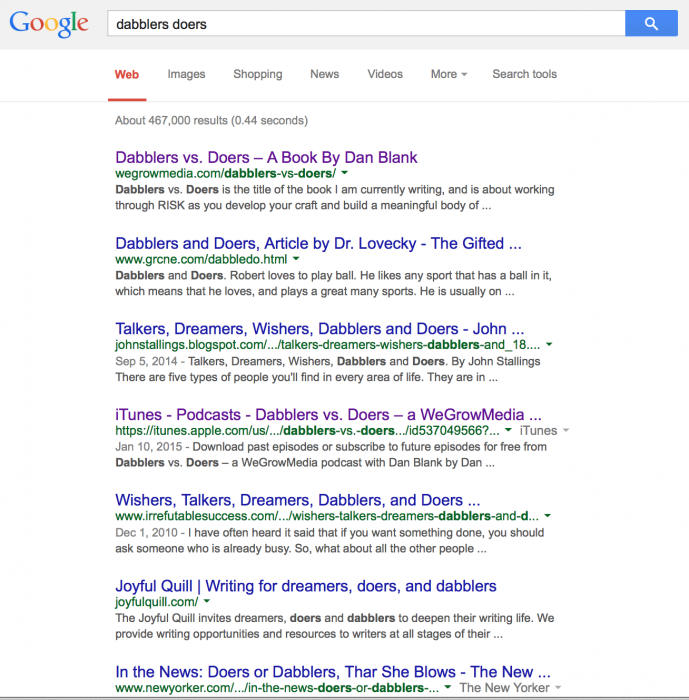
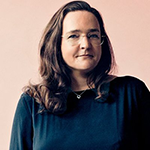 How can one woman not only manage five huge projects/businesses, but do so in a way that empowers other creative professionals to grow their craft and earn more revenue? Today, I talk to Tina Roth Eisenberg, who runs temporary tattoo company
How can one woman not only manage five huge projects/businesses, but do so in a way that empowers other creative professionals to grow their craft and earn more revenue? Today, I talk to Tina Roth Eisenberg, who runs temporary tattoo company 